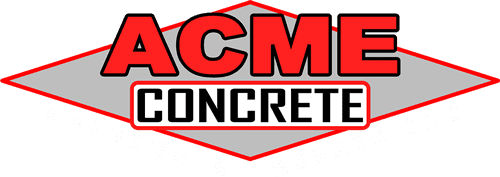Understanding the Cost Question
When uneven slabs appear in driveways, patios, or sidewalks, most homeowners immediately weigh two options: level the concrete through lifting techniques or completely replace it. The choice can significantly impact both your wallet and the usability of your property.
Concrete raising, also known as slabjacking or lifting, restores existing slabs by filling voids beneath them, bringing the surface back to grade. Replacement involves demolishing the slab, removing debris, preparing the base, and pouring new concrete. Both methods have unique costs and benefits, and homeowners in Crystal Lake IL often want to know which approach makes the most sense financially.
Why Concrete Sinks or Cracks
Soil and Drainage Issues
Water that seeps into the soil can wash away the supportive ground underneath the slab. Poor drainage is a leading cause of sinking driveways and patios.
Seasonal Freeze-Thaw Cycles
In regions like Crystal Lake, cold winters and hot summers create cycles of expansion and contraction. This puts stress on the soil and the concrete, resulting in uneven settlement.
Poor Installation Practices
If the soil beneath the slab wasn’t compacted properly during construction, it becomes unstable over time, creating voids that lead to sinking.
Tree Roots and Organic Activity
Tree roots either push up against slabs or, when they die, decompose and leave gaps under the surface. Both situations cause shifting.
What Is Concrete Leveling?
Concrete leveling is the process of restoring uneven slabs without replacing them. It uses specialized equipment to pump material underneath the surface, lifting it back into position.
Mudjacking
This traditional method involves pumping a mixture of water, soil, and cement beneath the slab. While cost-effective, the mixture is heavy and can contribute to future settling in weak soils.
Polyurethane Foam Injection
A modern alternative, polyurethane foam injection uses lightweight, expanding foam that requires smaller drill holes. It resists water infiltration, provides long-term stability, and is often preferred despite being slightly more expensive than mudjacking.
Advantages of Concrete Leveling
- Lower Cost: Typically 30–50% cheaper than replacement.
- Fast Completion: Most jobs finished in a few hours, with slabs ready for use the same day.
- Minimal Disruption: Requires only small drill holes and no demolition.
- Environmentally Friendly: Extends the life of existing concrete and reduces waste.
- Improved Safety: Restores level surfaces, reducing tripping hazards and enhancing curb appeal.
Limitations of Concrete Leveling
While leveling provides excellent benefits, it is not always the best solution.
- Severely cracked or crumbling slabs cannot be salvaged.
- Extreme settlement may be beyond lifting range.
- Aesthetic concerns may remain, since small drill holes will still be visible.
- Mudjacking, in particular, may not perform as well in areas with poor soil stability.
When Concrete Replacement Is Necessary
Concrete replacement is more invasive and costly, but sometimes unavoidable. It requires tearing out the old slab, preparing the soil base, and pouring new concrete.
Replacement is usually required when:
- Slabs are too damaged or deteriorated to repair.
- The surface is heavily cracked or broken.
- Decorative finishes or cosmetic upgrades are desired.
- Long-term durability outweighs the upfront savings of leveling.
Leveling vs. Replacement
| Factor | Concrete Leveling (Raising/Lifting) | Concrete Replacement |
| Cost | 30–50% less than replacement | Higher (2–3x leveling) |
| Time to Complete | Hours, ready same day | Days to weeks, curing required |
| Durability | 10–20 years with polyurethane | 20–30 years |
| Disruption | Minimal, small drill holes | Significant demolition |
| Eco-Friendly | Reuses slab, less waste | Generates debris, uses more materials |
This chart highlights why many homeowners choose leveling: it is cheaper, faster, and far less disruptive. However, replacement remains the best option for slabs that are too damaged or unstable.
Long-Term Value Considerations
Choosing between leveling and replacement requires looking beyond immediate costs.
When Leveling Is the Best Value
- Slabs are uneven but structurally sound.
- Fast turnaround is needed, such as for driveways or walkways.
- Budget constraints favor cost savings.
When Replacement Is the Best Value
- Severe cracking or crumbling makes leveling ineffective.
- Decorative concrete finishes are desired.
- You want maximum durability with a brand-new surface.
Both approaches can add value to a home, but the right choice depends on condition and homeowner goals.
So, is it cheaper to level concrete or replace it? In most cases, leveling is the less expensive solution. It saves homeowners in Crystal Lake both time and money while eliminating hazards and extending the life of existing slabs. Replacement, though more costly, is the better long-term solution for concrete that is too damaged to repair or when a brand-new appearance is desired.
By understanding the benefits, costs, and long-term implications of each method, homeowners can make an informed decision and choose the solution that best meets their needs.
Acme Concrete Raising & Repair Inc.
Reliable Concrete Lifting Is One Call Away
When considering whether to level or replace, working with an experienced company ensures the right choice is made for your property. Acme Concrete Raising & Repair Inc., located at 824 S Main St Ste. 105, Crystal Lake, IL 60014, specializes in cost-effective concrete lifting solutions that restore safety, curb appeal, and functionality. Their team can evaluate whether leveling or replacement is the smarter option for your situation. To schedule an appointment, call (815) 264-2200 and restore stability with confidence.
